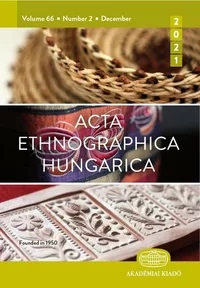Contemporary Latvian Design in Symbiosis with Local Handicraft Tradition
Contemporary Latvian Design in Symbiosis with Local Handicraft Tradition
Author(s): Inese SiricaSubject(s): Customs / Folklore
Published by: Akadémiai Kiadó
Keywords: design; Latvian; ethnic identity; craft; heritage; museum
Summary/Abstract: The contemporary musealization of Latvian design objects or the inclusion of high-quality examples in the Latvian National Museum Holdings began in 2005. Established three years later in 2008, the Latvian Design of the Year Award has since then attracted attention to this field, prompting further theoretical discourse. The publicly available narrative on 21st century Latvian design often points out the strong influence of local crafts and ethnic cultural heritage. An important impetus in contemporary, ethnically conscious design is the culture of the Song and Dance Celebration, within which the outfits of festival participants are created. This article identifies the application of traditional Latvian crafts in the works of Latvian artists and designers, visualizing the ideas and forms of ethnic identity. The analysis focuses on the general context of Latvian design: institutions supported by the Ministry of Culture, the Latvian Design of the Year Award and FOLD, the digital magazine of creative industries. Sources used include opinion articles and the public messages of companies. To facilitate theoretical understanding of the topic, it was important to take into account the theory of national identity and the museum narrative as well as the history of European design, especially at the turn of the 20th/21st centuries. It should be noted that the history of applied art and design in Latvia during the 20th century is still in the research stage. A historical insight into the construction of the Latvian traditional craft narrative, which began at the end of the 19th century, is also provided so as to promote greater comprehension of Latvian design. Essentially, it is a narrative of national identity, deliberately constructed through the craft practices, raw materials and compositional techniques characteristic of peasant culture.
Journal: Acta Ethnographica Hungarica
- Issue Year: 66/2021
- Issue No: 2
- Page Range: 325-342
- Page Count: 18
- Language: English
- Content File-PDF

